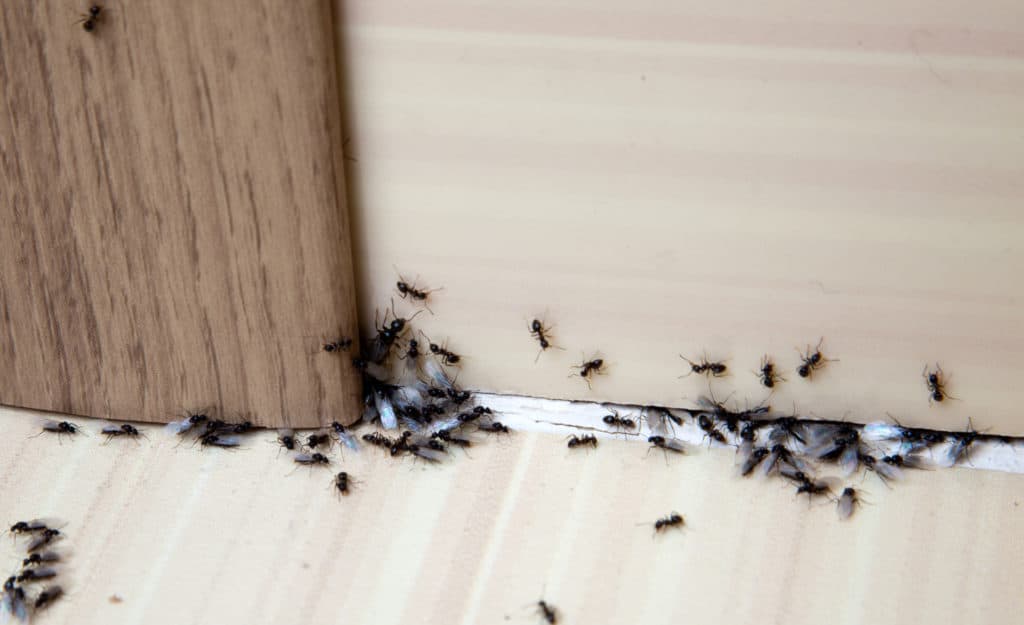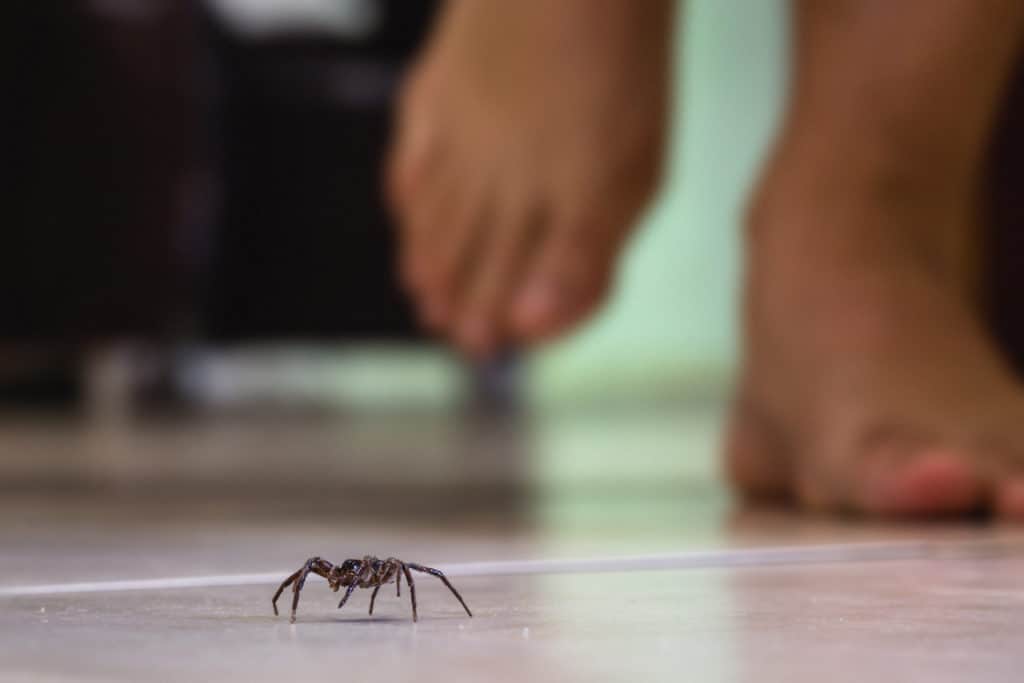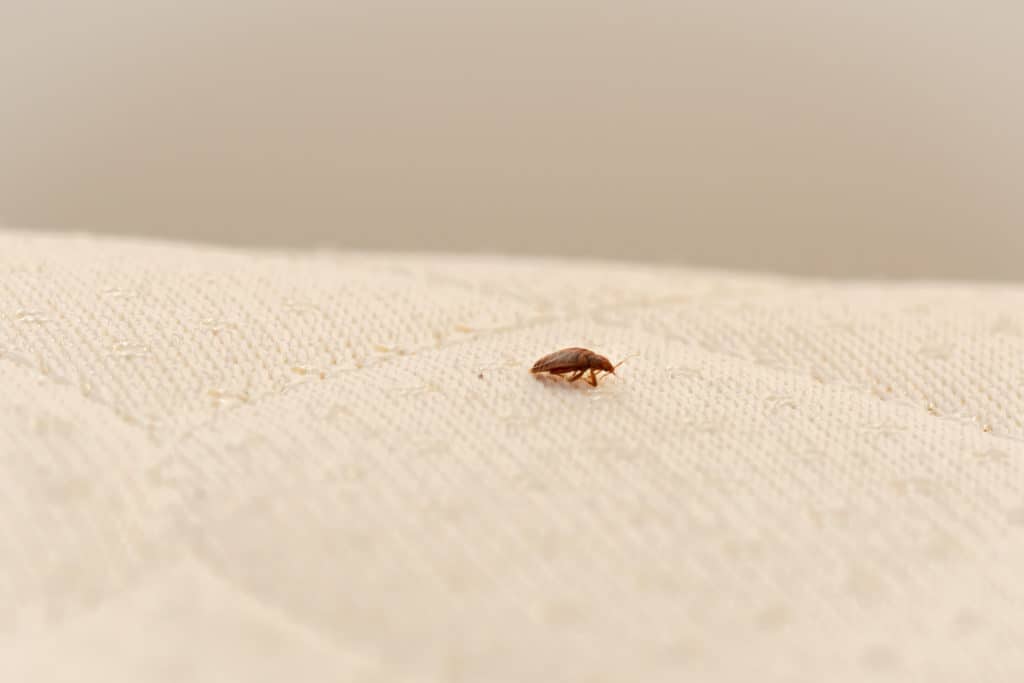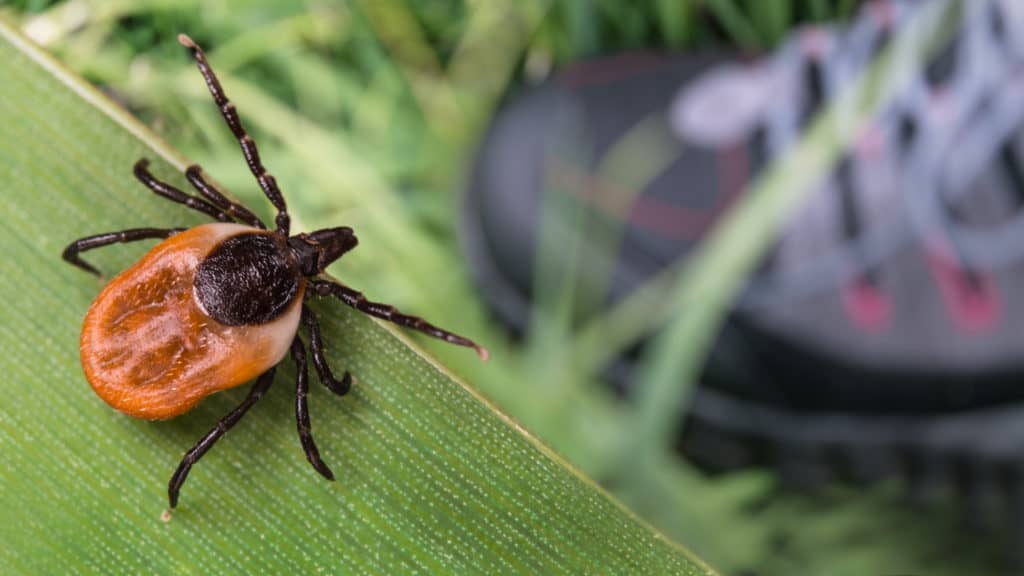Three Most Common Indoor and Outdoor Pests
Three Most Common Indoor and Outdoor Pests
Indoor Pests
These pesky pests find their way into your home, invading your space and robbing you of the comfort you deserve in your own home. While some make their way into your lives by sneaking through the smallest cracks and crevices of your home, others manage to use YOU as an unwilling smuggler of them and their friends.
There are many different kinds of indoor pests that people deal with day after day, but the following tend to be the most commonly experienced pests (based on the calls we receive in your area) and ways you can help prevent them.

-
Ants
In the hundreds, they come marching in. Ants are particularly prolific pests during the spring and summer months. Their aim is not only to find shelter, but to gain access to the plethora of food you have stored in your kitchen. There are many different species of ants, and, depending on which kind finds its way into your home, merely finding them everywhere could be the least of your worries. Some ant species, such as the carpenter ant, can do extensive damage to your home, gnawing away at structures and putting holes in the foundation. The faster you work to solve an ant problem, the less damage you will incur.
Even during the colder times of the year, ants continue to forage. It is even common for ants to forage for food on days when the temperature is just above 50 degrees. As such, any open foods, lingering trash, and crumbs on the ground of your home should be removed in order to avoid those scavenging ants from finding their way into your home. It is also important to try and have door sweeps and properly sealed windows in order to block out any curious ants from still finding their way to your cupboards.

-
Spiders
Spiders are TERRIFYING! In fact, arachnophobia has been consistently rated as one of the top phobias in the world. On the one hand, spiders can help control the populations of other insects, but on the other… they are highly unsightly, produce a plethora of nasty webbing, and create an uncomfortable, dirty environment. While these creepy crawlers are indeed unpleasant to live with, some are even dangerous. Both the black widow and the brown recluse are highly venomous local inhabitants and, while they prefer to avoid humans, they may find their way into your home.
The easiest thing you can do to keep spiders out of your home is to stay clutter free. Vacuum on a regular basis, especially in places that spiders hide, such as cabinets, corners and window seals. Not only will this limit the places in which spiders like to hide and make their homes, but this will also effectively limit the spiders’ food source by warding off other insects.

-
Bed Bugs
The plague of bed bugs is unfortunately on the rise. It is now estimated that one out of every 5 people in the United States has either dealt with a bed bug problem themselves or knows someone who has. These sneaky, bloodsucking insects are masters of concealment and operate by hitchhiking from location to location in order to find other hosts. Due to this, the cleanliness and secure nature of your home is of no consequence to them, meaning that it is very difficult to takes steps to prevent an infestation. Typically, the only preventative actions you can take involves caution regarding travel.
Hotel rooms are a primary hot spot for both hosting and spreading bed bugs. As such, if you plan to stay in a hotel, it is important to inspect your room carefully, even using a flashlight if possible as bedbugs will try to hide in dark areas. Some of the key areas to look include the creases of the mattress (underneath the fitted sheet), the crease between the headboard and mattress, and the cracks and corners inside drawers or closets. During your stay, avoid leaving any clothing or bags directly on the floor and try to instead use tables or luggage racks that will make your bags more difficult to reach. Also, you may be putting yourself at risk by unpacking your clothing into any dressers, so avoiding this when possible can help you stay bed-bug free.

Outdoor Pests
In the insect kingdom your yard looks like a haven. Fallen foliage and leaves collected on the ground of your property can act as insulation against the cold weather, making it a prime spot for pests to hide. Any standing water, whether it’s a bird bath or water from your roof pooling around the foundation of your home, can attract different kinds of pests. There are so many things that can draw pests into your yard and the following are the three most common backyard invaders.

-
Mosquitos
With an estimated 3,200 different species and a presence on all 7 continents, mosquitos may be the most common pest to plague the Earth. Not only are they annoying however, they are also highly dangerous. Mosquitos are notorious vectors of disease and are well known for carrying and transmitting some highly detrimental and even deadly diseases. They tend to congregate in areas that have water – particularly still water – and are most active around dusk. They’re as relentless as they are dangerous and have a tendency to swarm whenever people (their potential prey) are present.
Unfortunately, they are difficult to avoid as mosquitos are hardwired to find humans. Our body odor, warmth, movement, and even exhaled breath are all factors that attract mosquitos towards us. As such, putting up shields to block their senses gives you a chance at protecting yourself. Techniques of shielding yourself include, wearing clothing that covers your exposed skin, applying mosquito repellant, burning citronella candles, and even using oils such as lemon eucalyptus to repel the bloodsuckers. You can also try to eliminate any standing water that may be around your home as this will reduce their attraction to your yard.

-
Hymenoptera
While the term above may not sound at all familiar, it is actually an order of insects that you are sure to know very well. The order consists of all of your favorite flying stingers such as bees, wasps, yellow jackets, hornets, etc. From the docile little honeybees to the aggressive and vengeful hornets, Hymenoptera are found buzzing around homes all throughout the United States. Depending on which species has invaded your yard, you may have nests forming on the sides of your home, under eaves, along tree branches, inside of tree trunks, in holes in the ground and even along the siding of your home.
The biggest problem with these pests is that even the most docile of species can become hostile if they feel threatened. As such, it is typically wise to immediately seek out the assistance of professionals in order to avoid being harmed.

-
Ticks
Ticks are actually members of the arachnid family, meaning they are closely related to spiders. They are external parasites that survive by devouring the blood of unsuspecting hosts such as humans, dogs, deer, and other mammals. While there are many different species of ticks, almost all of them prefer to inhabit areas of high vegetation where they sit in wait for their prey. Due to this homes that have any amount of dense forestry or that are in the proximity of forested areas are at risk of having ticks in their yards. Fortunately, there are some ways to avoid becoming a meal for these nasty arachnids and, thereby, avoiding the risk of contracting one of the various, dangerous diseases they transmit.
The easiest way to avoid an encounter with ticks is by being aware of where you may come into contact with them. Ticks are most commonly active between April and September and are more likely to be found in heavily wooded areas with extensive foliage. Due to this, they are often found while engaging in outdoor activities such as hiking and climbing. If you are doing either of these activities, it can be very helpful to walk in the center of trails and pitch your tent in a clearing. You can also treat your clothing and gear with permethrin products and use EPA approved insect repellants on yourself. When you return indoors, you will always want to examine yourself, your clothing, and your pets carefully. The sooner you spot a tick, the better chance you have of removing it before it can latch on to you and transmit harmful pathogens into your bloodstream.

Our Promise
No matter which of these pests you may be facing, we are dedicated to solving your pest problems. We always encourage our clients to have an open dialogue with us because this is the best way for us to understand your particular pest needs. Our technicians will work with you to tackle each of your pests – indoor and out – and we will even return for free-reservices until your problems are solved for good. If you are experiencing a problem with any of the aforementioned pests, call us today for quick, friendly, and targeted pest control services.

